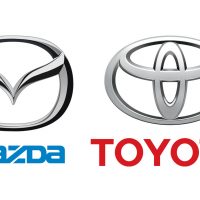
Western Kentucky is serious about throwing its hat into the ring as a potential location for a new joint venture between Japanese automakers.
Executives from Toyota and Mazda announced plans Aug. 3 to jointly construct a proposed $1.6 billion manufacturing facility in the U.S., according to Associated Press reports. The companies intend to pool resources on the plant, which executives hope would be completed and in production by 2021. The plant would employ about 4,000 workers.
The Purchase Area Regional Industrial Authority, comprised of representatives from each of the eight counties in the Jackson Purchase, has taken steps to equip Gov. Matt Bevin with an incentive to locate that facility in the region. The Industrial Authority voted last Friday to give a 2,100-plus acre tract of land in Hickory to the effort as an incentive to build the plant. The land was acquired in 2009 through a series of federal grants and state funds.
Marshall County Economic Development Director Josh Tubbs, who sits on the board, said it was an effort to demonstrate the region was serious about recruitment. Tubbs said the Authority wanted to equip Bevin with the tools to promote the region in large-scale industry.
“We wanted to make sure west Kentucky’s asset in the regional part was in the forefront of the governor, the Cabinet for Economic Development and any of our site consultants that might be working on this project,” Tubbs said. “… We’re fashioning a resolution to send up to the governor and to the Cabinet for Economic Development so that they can use that as a … draw for the project.”
It’s a project that Tubbs said the Hickory site was intended to attract and could bring more than just direct result jobs to the area, which Tubbs said would be beneficial for the entire region.
“The effect of that is not just the initial jobs,” Tubbs said. “The suppliers and services offered to that plant create additional jobs that will be felt throughout the region. And they’re good paying jobs. So, yeah: it’s out there, and it’s exciting. … It’s a proactive approach to recruiting industry.”
Regional marketing is becoming the standard in industrial recruitment and economic development. Smaller communities pooling resources to entice manufacturers to locate in the area have at times proven more effective than when standing alone.
“With a project of this size, you really have to think regionally,” Tubbs said. “… Basically what it comes down to is, when you’re in a rural community and you’re trying to find a workforce for a project of this size, you have to look at it in terms of regionally. Because you need all of those people, you need all of that labor shed to provide them with that workforce. … So, what this does for us is No. 1: It puts us with an automotive industry that will also attract suppliers. So there will be other companies that will look to locate near to that plant. And just the residual effects of the scope of that investment and the jobs that are created from a plant like this will do unbelievable things for the local economy. It increases our visibility tremendously.”
While Toyota and Mazda have not yet disclosed potential locations for the plant, executives issued a blind request for proposals from states across the midwest and south. Analysts say the initiative will likely spark a bidding war among at least a dozen states, including Kentucky. Bevin told automotive suppliers and industry officials earlier this month at the Kentucky Automotive Industry Association’s Autovision Conference that state would aggressively pursue the facility, according to a Courier-Journal report.
Toyota’s largest facility is located in Georgetown, which Bevin said gives the state an advantage, according to Courier-Journal reports. The 8 million square-foot Georgetown plant employs about 8,000 people and has resulted in about 30,000 jobs from associated indirect business. The facility manufactures the Camry, Avalon and Lexus ES 350, according to the plant’s website.
The newly proposed facility would be Mazda’s first manufacturing plant in the U.S., and is expected to manufacture the Toyota Corolla and Mazda crossover SUVs. Executives anticipate the factory would produce about 300,000 cars in a year, according to Associated Press reports.